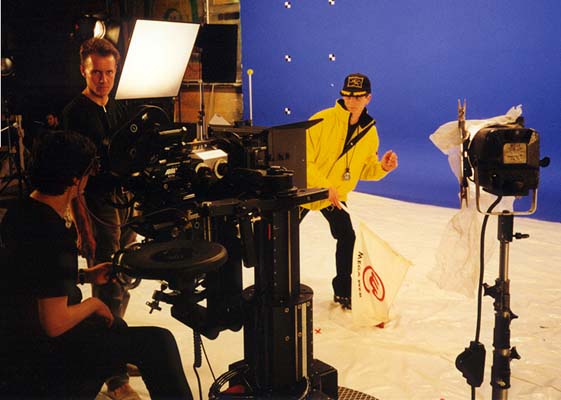All footage submitted to a film editor must meet three requirements:
TECHNICAL
AESTHETIC
NARRATIVE
The technical elements of a film — such as photographic treatment, lighting, color, exposure, sound, etc. — should be uniform in production quality. No noticeable visual or audio differences should be apparent when the picture is assembled, and a properly timed and balanced release print made. A mis-match or distracting change, unless deliberately inserted for a special effect, may disturb the audience. A poorly recorded stretch of sound, a perceptible change in lighting, unbalanced color; or any other technical discrepancies are unacceptable. Excellent craftsmanship is taken for granted in professionally-produced theatrical films. If serious non-theatrical film makers expect their films to receive proper audience attention, they should strive for professional quality.

professional film. Lighting, color, exposure, sound, etc, should be
uniform in production quality in a properly timed and balanced
release print. Technical discrepancies are distracting, and break
the story telling spell.
The assembled picture should unreel in a series of moving images, pleasing to watch and easy to understand, unless the film maker desires – for story purposes- to shock or distract the audience: or otherwise create a violent or unpleasant audience reaction. Scenic compositions, player and camera movements, light effects, choice of colors, camera treatment and other pictorial aspects of settings, costumes, backgrounds and props should all be integrated on the basis of their cumulative result when the scenes are finally edited. The good cameraman strives to produce the most beautiful moving images possible. However it is often better under documentary conditions, to present a realistic rather than a pictorially beautiful picture. This does not imply that beauty and realism cannot be combined; or that non-theatrical films must be photographed in a dull, unimaginative, mechanical style. It simply means that documentary subjects should be representational rather than dressed up for picture purposes. Engineering, military, educational, business, industrial in-plant, and other non-theatrical films should be as beautiful as possible, within realistic confines. Pictorial elements involved should be handled in an esthetically suitable fashion, without stealing the show from the subject. The primary aim of a documentary is to “sell” the subject, not the photography.

within realistic confines. This is a shot from the famous documentary
Fahrenheit 9/11
NARRATIVE FACTORS
Technically perfect, excellently-composed shots have little or no meaning if the picture is presented in an illogical, uninteresting or incoherent manner. The audience should neither be confused nor have to strain to follow subject themes, unless plot deviations will help for narrative purposes.
Story problems are not the main concern of cameramen shooting from prepared scripts. But the non-theatrical cameraman/director, shooting on his own from an outline, or a few notes, must be sure that his footage can be assembled into a story-telling motion picture. This calls for thorough understanding of story values, audience reaction and editorial requirements. Even the simplest documentary film must capture the audience’s interest and hold its attention as the film unreels. After the theme or plot is introduced and developed, the narrative must build in interest as it progresses. Each shot should make a point. All scenes should be linked together so that their combined effect, rather than their individual contents, produces the desired audience reactions.
Film editors have a motto: "Make them laugh or make them cry, but make them care!"
1 comment:
This blog is brilliant! Studying for an editing paper and then a film appreciation one and this content is great! Thanks very much!
Post a Comment